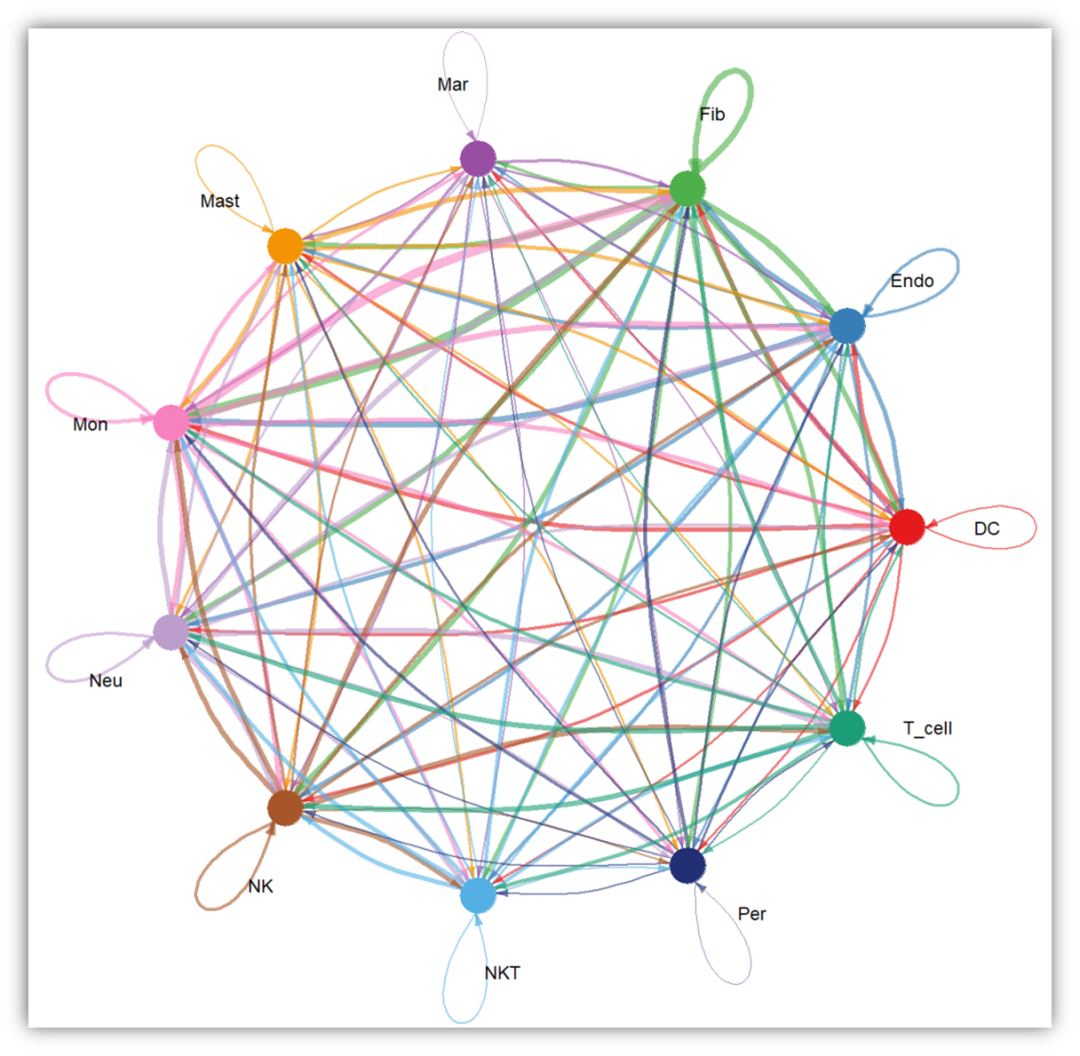ROS入门(八)——仿真机器人四(Gazebo+Rviz+雷达、摄像头、kinet仿真显示)
【奥特学园】ROS机器人入门课程《ROS理论与实践》零基础教程P278-288【以上视频笔记见http://www.autolabor.com.cn/book/ROSTutorials/】官方参考链接:http://gazebosim.org/tutorials?tut=ros_gzplugins前文参考ROS入门(五)——仿真机器人一(URDF+Rviz)ROS入门(六)——仿真机器人二(Xac
所用的学习链接:
【奥特学园】ROS机器人入门课程《ROS理论与实践》零基础教程P278-288
【以上视频笔记见http://www.autolabor.com.cn/book/ROSTutorials/】
官方参考链接:http://gazebosim.org/tutorials?tut=ros_gzplugins
前文参考
ROS入门(六)——仿真机器人二(Xacro+Rviz+Arbotix小车运动)
ROS入门(七)——仿真机器人三(Gazebo+Xacro)
一、介绍
1.目标
1.运动控制以及里程计信息显示
2.雷达信息仿真以及显示
3.摄像头信息仿真以及显示
4.kinect 信息仿真以及显示2.ros_control
为了提高机器人系统在不同平台上的可移植性,ROS内置了一个解决方案ros_control。包含了各种接口以实现不同平台上的机器人系统兼容,提高程序的效率和灵活性。
二、实操流程
1.运动控制
(1)运动控制 t6_move.xacro文件
在前面章节中已经创建了一个机器人模型,接下来需要编写一个单独的 xacro 文件【t6_move.xacro】,为机器人模型添加传动装置以及控制器
<!-- 文件内容:实现两轮差速配置 -->
<robot name="my_car_move" xmlns:xacro="http://wiki.ros.org/xacro">
<!-- 传动实现:用于连接控制器与关节 -->
<xacro:macro name="joint_trans" params="joint_name">
<!-- Transmission is important to link the joints and the controller -->
<transmission name="${joint_name}_trans">
<type>transmission_interface/SimpleTransmission</type>
<joint name="${joint_name}">
<hardwareInterface>hardware_interface/VelocityJointInterface</hardwareInterface>
</joint>
<actuator name="${joint_name}_motor">
<hardwareInterface>hardware_interface/VelocityJointInterface</hardwareInterface>
<mechanicalReduction>1</mechanicalReduction>
</actuator>
</transmission>
</xacro:macro>
<!-- 每一个驱动轮都需要配置传动装置 -->
<xacro:joint_trans joint_name="left_wheel2base_link" />
<xacro:joint_trans joint_name="right_wheel2base_link" />
<!-- 控制器 -->
<gazebo>
<plugin name="differential_drive_controller" filename="libgazebo_ros_diff_drive.so">
<rosDebugLevel>Debug</rosDebugLevel>
<publishWheelTF>true</publishWheelTF>
<robotNamespace>/</robotNamespace>
<publishTf>1</publishTf>
<publishWheelJointState>true</publishWheelJointState>
<alwaysOn>true</alwaysOn>
<updateRate>100.0</updateRate>
<legacyMode>true</legacyMode>
<leftJoint>left_wheel2base_link</leftJoint> <!-- 左轮 -->
<rightJoint>right_wheel2base_link</rightJoint> <!-- 右轮 -->
<wheelSeparation>${base_link_radius * 2}</wheelSeparation> <!-- 车轮间距 -->
<wheelDiameter>${wheel_radius * 2}</wheelDiameter> <!-- 车轮直径 -->
<broadcastTF>1</broadcastTF>
<wheelTorque>30</wheelTorque>
<wheelAcceleration>1.8</wheelAcceleration>
<commandTopic>cmd_vel</commandTopic> <!-- 运动控制话题 -->
<odometryFrame>odom</odometryFrame>
<odometryTopic>odom</odometryTopic> <!-- 里程计话题 -->
<robotBaseFrame>base_footprint</robotBaseFrame> <!-- 根坐标系 -->
</plugin>
</gazebo>
</robot>(2)xacro集成文件 t7_12346.xacro
新建 t7_12346.xacro
<!-- 组合惯性矩阵文件、小车、摄像头、雷达和运动控制 -->
<robot name="my_car_camera" xmlns:xacro="http://wiki.ros.org/xacro">
<xacro:include filename="t1_head.xacro" />
<xacro:include filename="t2_car.xacro" />
<xacro:include filename="t3_camera.xacro" />
<xacro:include filename="t4_laser.xacro" />
<xacro:include filename="t6_move.xacro" />
</robot>(3)launch文件启动gazebo
新建 t7_gazebo.launch
<launch>
<!-- 将 Urdf 文件的内容加载到参数服务器 -->
<param name="robot_description" command="$(find xacro)/xacro $(find urdf_gazebo)/urdf/t7_12346.xacro" />
<!-- 启动 gazebo -->
<!-- 加载仿真环境 -->
<!-- <include file="$(find gazebo_ros)/launch/empty_world.launch" /> -->
<include file="$(find gazebo_ros)/launch/empty_world.launch">
<arg name="world_name" value="$(find urdf_gazebo)/worlds/box_house.world"></arg>
</include>
<!-- 在 gazebo 中显示机器人模型 -->
<node pkg="gazebo_ros" type="spawn_model" name="model" args="-urdf -model mycar -param robot_description" />
</launch>- ctrl+shift+b编译
- 新终端1
roscore- 新终端2
roslaunch urdf_gazebo t7_gazebo.launch(4)launch文件启动rviz
新建 t7_rviz.launch
<launch>
<!-- 启动 rviz -->
<node pkg="rviz" type="rviz" name="rviz" />
<!-- 关节以及机器人状态发布节点 -->
<node name="joint_state_publisher" pkg="joint_state_publisher" type="joint_state_publisher" />
<node name="robot_state_publisher" pkg="robot_state_publisher" type="robot_state_publisher" />
</launch>- 新终端3
roslaunch urdf_gazebo t7_rviz.launch(5)小车运动
查看话题列表,会发现多了 /cmd_vel 然后可以发布 vmd_vel 消息控制。
- 方法一(推荐)
①如果没有安装teleop-twist-keyboard,则进行安装
# sudo apt-get install ros-<ros版本>-teleop-twist-keyboard
sudo apt-get install ros-noetic-teleop-twist-keyboard②启动键盘方向控制
rosrun teleop_twist_keyboard teleop_twist_keyboard.py 运行完就可以用键盘控制小车运动【注意要要让当前窗口为运行该代码的终端,小车才能运动】
常用按键:
u :左侧逆时针圆周 i :前进 o :右侧顺时针圆周
j :逆时针原地运动 k :停止 l :顺时针原地运动
m :左侧顺时针圆周 , :后退 . :右侧逆时针圆周
q/z : increase/decrease max speeds by 10%(速度提高/降低10%)
w/x : increase/decrease only linear speed by 10%(线速度提高/降低10%)
e/c : increase/decrease only angular speed by 10%(角速度提高/降低10%)
- 方法二
使用命令控制(或者可以编写单独的节点控制),在终端运行代码后发现gazebo中的小车运动了
# 查看话题列表
# rostopic list
rostopic pub -r 10 /cmd_vel geometry_msgs/Twist '{linear: {x: 0.2, y: 0, z: 0}, angular: {x: 0, y: 0, z: 0.5}}'
(6)Rviz信息展示
①左侧设置Global Options→Fixed Frame:odom
②左下角Add→RobotModel、Axes、TF、Odometry
③左侧设置Odometry→Topic:/odom,并取消勾选Covariance【不然页面会呈现透明黄色】
④左上角File→Save config as→7.19_demo01/urdf_gazrbo目录下新建config文件夹→保存为 t7_car.rviz
修改 t7_rviz.launch的环境导入,可以重启重新加载
# 原句子
# <node pkg="rviz" type="rviz" name="rviz" />
# 更新后
<node pkg="rviz" type="rviz" name="rviz_test" args="-d $(find urdf_gazebo)/config/t7_car.rviz" />控制小车在gazebo运动时,rviz将显示相关信息

2.雷达、摄像头信息仿真
(1)雷达传感器 t8_sensor_laser.xacro
新建 t8_sensor_laser.xacro
<robot name="my_sensors" xmlns:xacro="http://wiki.ros.org/xacro">
<!-- 配置雷达传感器信息 -->
<gazebo reference="laser">
<sensor type="ray" name="rplidar">
<pose>0 0 0 0 0 0</pose>
<visualize>true</visualize>
<update_rate>5.5</update_rate>
<ray>
<scan>
<horizontal>
<samples>360</samples>
<resolution>1</resolution>
<min_angle>-3</min_angle>
<max_angle>3</max_angle>
</horizontal>
</scan>
<range>
<min>0.10</min>
<max>30.0</max>
<resolution>0.01</resolution>
</range>
<noise>
<type>gaussian</type>
<mean>0.0</mean>
<stddev>0.01</stddev>
</noise>
</ray>
<plugin name="gazebo_rplidar" filename="libgazebo_ros_laser.so">
<topicName>/scan</topicName>
<frameName>laser</frameName>
</plugin>
</sensor>
</gazebo>
</robot>(2)摄像头传感器 t9_sensor_camera.xacro
新建 t9_sensor_camera.xacro
<robot name="my_sensors" xmlns:xacro="http://wiki.ros.org/xacro">
<!-- 被引用的link -->
<gazebo reference="camera">
<!-- 类型设置为 camara -->
<sensor type="camera" name="camera_node">
<update_rate>30.0</update_rate> <!-- 更新频率 -->
<!-- 摄像头基本信息设置 -->
<camera name="head">
<horizontal_fov>1.3962634</horizontal_fov>
<image>
<width>1280</width>
<height>720</height>
<format>R8G8B8</format>
</image>
<clip>
<near>0.02</near>
<far>300</far>
</clip>
<noise>
<type>gaussian</type>
<mean>0.0</mean>
<stddev>0.007</stddev>
</noise>
</camera>
<!-- 核心插件 -->
<plugin name="gazebo_camera" filename="libgazebo_ros_camera.so">
<alwaysOn>true</alwaysOn>
<updateRate>0.0</updateRate>
<cameraName>/camera</cameraName>
<imageTopicName>image_raw</imageTopicName>
<cameraInfoTopicName>camera_info</cameraInfoTopicName>
<frameName>camera</frameName>
<hackBaseline>0.07</hackBaseline>
<distortionK1>0.0</distortionK1>
<distortionK2>0.0</distortionK2>
<distortionK3>0.0</distortionK3>
<distortionT1>0.0</distortionT1>
<distortionT2>0.0</distortionT2>
</plugin>
</sensor>
</gazebo>
</robot>(3)修改组合文件和启动
①修改 t7_12346.xacro
<!-- 组合惯性矩阵文件、小车、摄像头、雷达和运动控制 -->
<robot name="my_car_camera" xmlns:xacro="http://wiki.ros.org/xacro">
<xacro:include filename="t1_head.xacro" />
<xacro:include filename="t2_car.xacro" />
<xacro:include filename="t3_camera.xacro" />
<xacro:include filename="t4_laser.xacro" />
<xacro:include filename="t6_move.xacro" />
<!-- 雷达仿真信息 -->
<xacro:include filename="t8_sensor_camera.xacro" />
<!-- 摄像头仿真信息 -->
<xacro:include filename="t9_sensor_laser.xacro" />
</robot>②启动
ctrl+shift+b 编译
# 终端2
roslaunch urdf_gazebo t7_gazebo.launch
# 终端3
roslaunch urdf_gazebo t7_rviz.launch
(4)信息展示
① rviz中Add → LaserScan(设置 Topic:/scan)
② rviz中Add → Camera(设置 image topic:/camera/image_raw)

rviz窗口中显示了摄像头拍摄结果和雷达扫描结果
3.kinect摄像头信息仿真
kinet摄像头是一种GBD深度摄像头,可以显示更多深度的拍摄信息
(1)kinet摄像头传感器 t10_sensor_kinet.xacro
新建 t10_sensor_kinet.xacro。
由于未搭建专门的组件作为kinet摄像头,因此使用小车构造中未被安排功能的支架作为摄像头。支架名称为support,因此将用到 " kinect link名称 " 的地方改为 " support "。【代码中已注释并修改过】
<robot name="my_sensors" xmlns:xacro="http://wiki.ros.org/xacro">
<!-- <gazebo reference="kinect link名称"> -->
<gazebo reference="support">
<sensor type="depth" name="camera">
<always_on>true</always_on>
<update_rate>20.0</update_rate>
<camera>
<horizontal_fov>${60.0*PI/180.0}</horizontal_fov>
<image>
<format>R8G8B8</format>
<width>640</width>
<height>480</height>
</image>
<clip>
<near>0.05</near>
<far>8.0</far>
</clip>
</camera>
<plugin name="kinect_camera_controller" filename="libgazebo_ros_openni_kinect.so">
<cameraName>camera</cameraName>
<alwaysOn>true</alwaysOn>
<updateRate>10</updateRate>
<imageTopicName>rgb/image_raw</imageTopicName>
<depthImageTopicName>depth/image_raw</depthImageTopicName>
<pointCloudTopicName>depth/points</pointCloudTopicName>
<cameraInfoTopicName>rgb/camera_info</cameraInfoTopicName>
<depthImageCameraInfoTopicName>depth/camera_info</depthImageCameraInfoTopicName>
<!-- <frameName>kinect link名称</frameName> -->
<!-- 在插件中为kinect设置坐标系,用support_depth替代support -->
<frameName>support_depth</frameName>
<baseline>0.1</baseline>
<distortion_k1>0.0</distortion_k1>
<distortion_k2>0.0</distortion_k2>
<distortion_k3>0.0</distortion_k3>
<distortion_t1>0.0</distortion_t1>
<distortion_t2>0.0</distortion_t2>
<pointCloudCutoff>0.4</pointCloudCutoff>
</plugin>
</sensor>
</gazebo>
</robot>(2)修改组合文件和启动
①修改 t7_12346.xacro
<!-- 组合惯性矩阵文件、小车、摄像头、雷达和运动控制 -->
<robot name="my_car_camera" xmlns:xacro="http://wiki.ros.org/xacro">
<xacro:include filename="t1_head.xacro" />
<xacro:include filename="t2_car.xacro" />
<xacro:include filename="t3_camera.xacro" />
<xacro:include filename="t4_laser.xacro" />
<xacro:include filename="t6_move.xacro" />
<!-- 雷达仿真信息 -->
<xacro:include filename="t8_sensor_camera.xacro" />
<!-- 摄像头仿真信息 -->
<xacro:include filename="t9_sensor_laser.xacro" />
<!-- kinect仿真信息 -->
<xacro:include filename="t10_sensor_kinet.xacro" />
</robot>②修改 t7_rviz.launch
<launch>
<!-- 启动 rviz -->
<node pkg="rviz" type="rviz" name="rviz_test" args="-d $(find urdf_gazebo)/config/t7_car.rviz" />
<!-- 关节以及机器人状态发布节点 -->
<node name="joint_state_publisher" pkg="joint_state_publisher" type="joint_state_publisher" />
<node name="robot_state_publisher" pkg="robot_state_publisher" type="robot_state_publisher" />
<!-- 发布新设置的坐标系,否则会错位 -->
<node pkg="tf2_ros" type="static_transform_publisher" name="static_transform_publisher" args="0 0 0 -1.57 0 -1.57 /support /support_depth" />
</launch>②启动
ctrl+shift+b 编译
# 终端2
roslaunch urdf_gazebo t7_gazebo.launch
# 终端3
roslaunch urdf_gazebo t7_rviz.launch
(3)信息展示
rviz中 → Camera → Image Topic :/camera/depth/image_raw
(4)点云数据展示
在kinect中也可以以点云的方式显示感知周围环境,而不用小车在rviz中运动,操作如下:
①rviz中 → Add → Point Cloud2
②Point Cloud2 → Topic :/camera/depth/points
【我的虚拟机同时启动rviz和gazebo,并加入各种各样的仿真信息显示组件的时候,都快爆炸了,所以一步步慢慢添加】

加入点云数据后,gazebo中小车移动时,rviz中不会移动,而是前方的 " 大屏幕 " 内容显示为拍摄到的内容

开放原子开发者工作坊旨在鼓励更多人参与开源活动,与志同道合的开发者们相互交流开发经验、分享开发心得、获取前沿技术趋势。工作坊有多种形式的开发者活动,如meetup、训练营等,主打技术交流,干货满满,真诚地邀请各位开发者共同参与!
更多推荐
 已为社区贡献5条内容
已为社区贡献5条内容







所有评论(0)